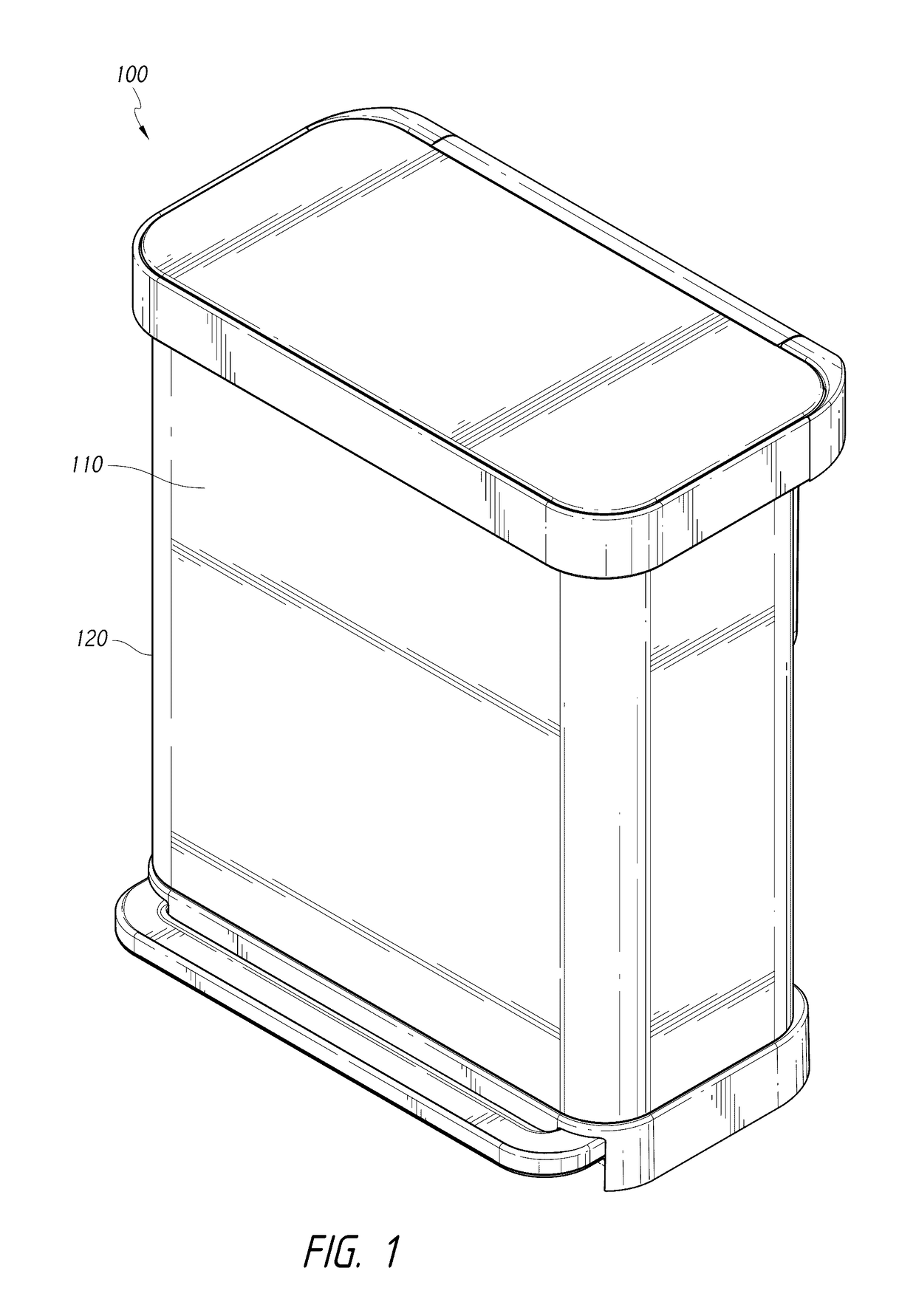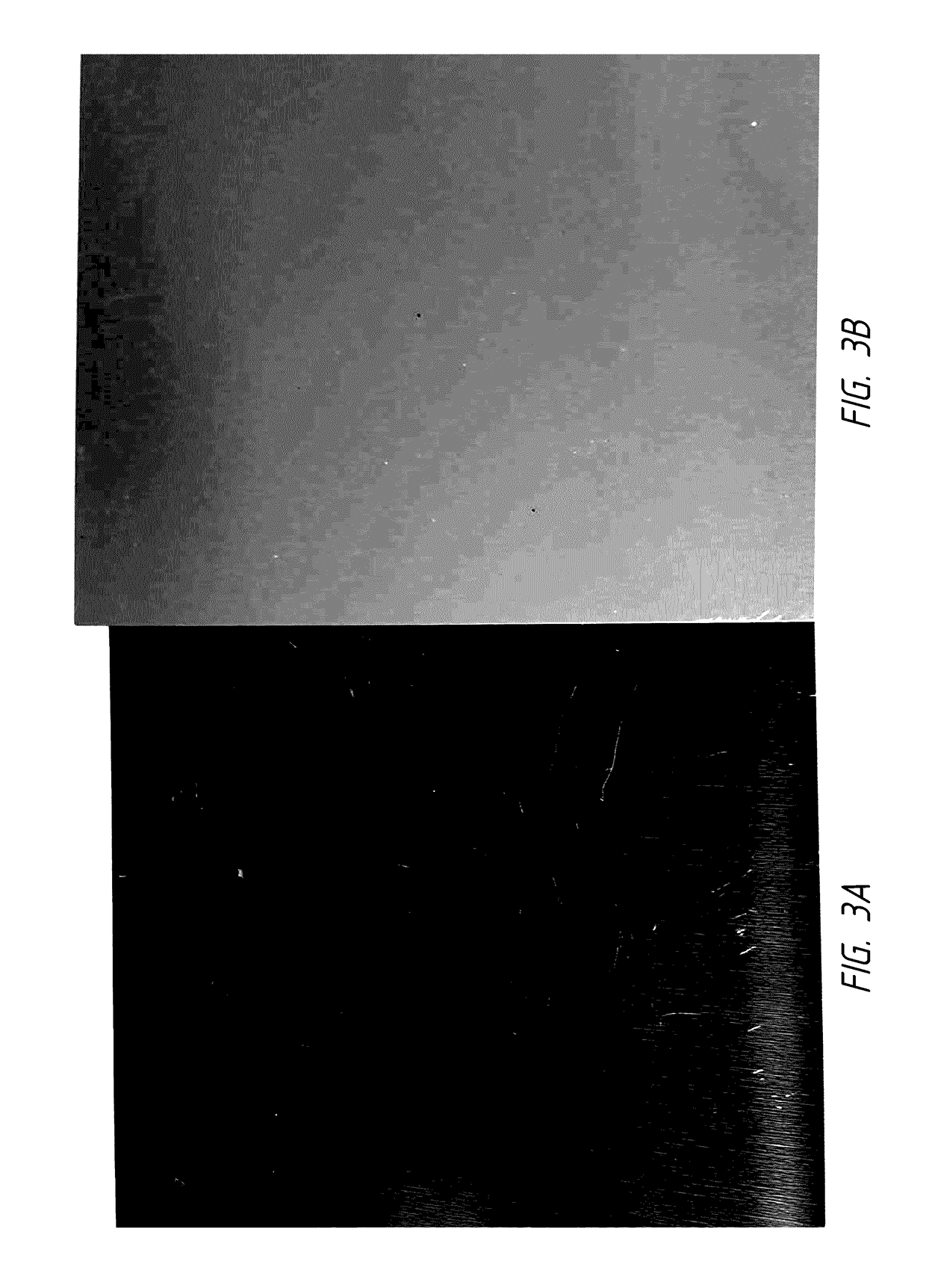Household goods with antimicrobial coatings and methods of making thereof
a technology of antimicrobial coating and household goods, applied in the direction of biocide, coatings, refuse gathering, etc., can solve the problems of bacterial and other microbial build-up and growth, soap dispensers are often exposed to users' soiled hands, and waste of resources, so as to reduce waste, reduce e, and reduce s
- Summary
- Abstract
- Description
- Claims
- Application Information
AI Technical Summary
Benefits of technology
Problems solved by technology
Method used
Image
Examples
example 1
on of Coated Metal
[0095]Coatings were prepared using a metered-rolling process and a reverse-rolling technique. Prior to coating, a slurry of polyethylene polymer and solvent was prepared. To this solution was added 1.25 wt % of AC10D grade AGION® (relative to the dry weight of polyethylene) forming a mixture. This mixture was stirred to achieve a uniform slurry. Once a uniform was achieved, it was added to the reservoir of a metered-rolling device which distributed the slurry on a stainless steel sheet via a roller rotating in the same direction of the sheet movement. The sheet was allowed to cure. FIGS. 3A and 4A show the resultant coated sheet.
[0096]A second slurry was formed using the same ingredients and techniques described above. This mixture was added to the reservoir of a reverse-rolling device which distributed the slurry on a stainless steel sheet via a roller rotating in the direction opposite the direction of the sheet. The sheet was allowed to cure. FIGS. 3B and 4B sho...
example 2
bial Testing
[0098]Several experiments were performed using the Japanese Industrial Standard (“JIS”) method Z 2801 antimicrobial evaluation method to show the antimicrobial activity of a sheet metal coated using the reverse-rolling process described in Example 1. The JIS method Z 2801 is a quantitative test designed to assess the performance of antimicrobial finishes on hard, non-porous surfaces. The method can be conducted using contact times ranging from ten minutes up to 24 hours. For a JIS Z 2801 test, non-antimicrobial control surfaces are used as the baseline for calculations of microbial reduction. The method can be used to determine the antimicrobial activity of a diverse array of surfaces including plastics, metals, and ceramics. The test microorganism(s) selected for this test were Escherichia coli 8739 (a Gram-negative bacteria) and Staphylococcus aureus 6538 (a Gram-positive bacteria).
Testing Method
[0099]The test microorganism was prepared by growth in a Tryptic Soy Broth...
example 3
bial Testing
[0104]Below are experiments performed using the Sciessent LLC antimicrobial evaluation methods to show the antimicrobial activity of a sheet metal (2″×2″) coated using the reverse-rolling process described in Example 1. Certain samples were abraded before testing. The bacteria used were E. coli and S. Aureus.
TABLE 3E. Coli (ATCC#: 25922) TestingOrganismCount (CFU / ml)Zero24 HoursContactContactPercentSample IdentificationTimeTimeReduction**Assay (+)2.5 × 1052.0 × 107No ReductionAssay (−)N / AUntreated coated metal4.6 × 107No Reductionsamples SciessentID# 150811-1ACoated metal samples (1.5%3.2 × 10499.93%AC10D in coating) SciessentID# 150806-3B, Rep 1Coated metal samples (1.5%2.8 × 10499.94%AC10D in coating) SciessentID# 150806-3B, Rep 2Coated metal samples (1.5%1.04 × 103 99.99%AC10D in coating) - AbradedSciessent ID# 150806-3B,Rep 1Coated metal samples (1.5%5.4 × 10299.999% AC10D in coating) - AbradedSciessent ID# 150806-3B,Rep 2Testing was performed in accordance with stan...
PUM
| Property | Measurement | Unit |
|---|---|---|
| weight percent | aaaaa | aaaaa |
| weight percent | aaaaa | aaaaa |
| weight percent | aaaaa | aaaaa |
Abstract
Description
Claims
Application Information
 Login to View More
Login to View More - R&D
- Intellectual Property
- Life Sciences
- Materials
- Tech Scout
- Unparalleled Data Quality
- Higher Quality Content
- 60% Fewer Hallucinations
Browse by: Latest US Patents, China's latest patents, Technical Efficacy Thesaurus, Application Domain, Technology Topic, Popular Technical Reports.
© 2025 PatSnap. All rights reserved.Legal|Privacy policy|Modern Slavery Act Transparency Statement|Sitemap|About US| Contact US: help@patsnap.com



